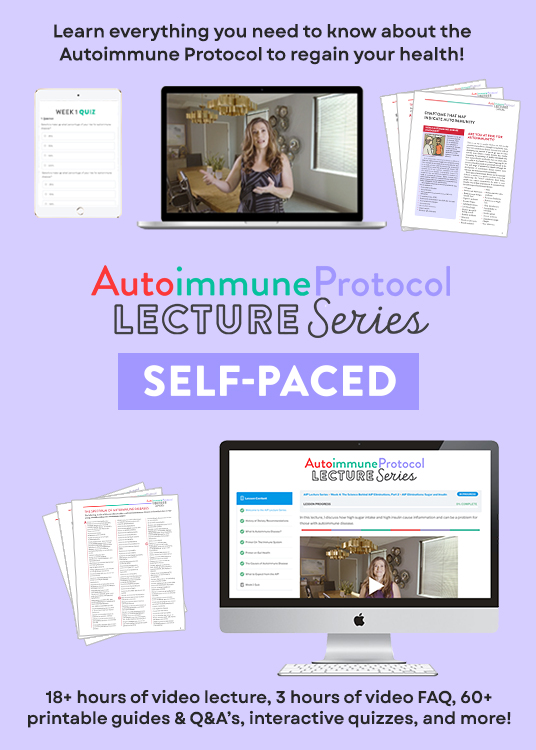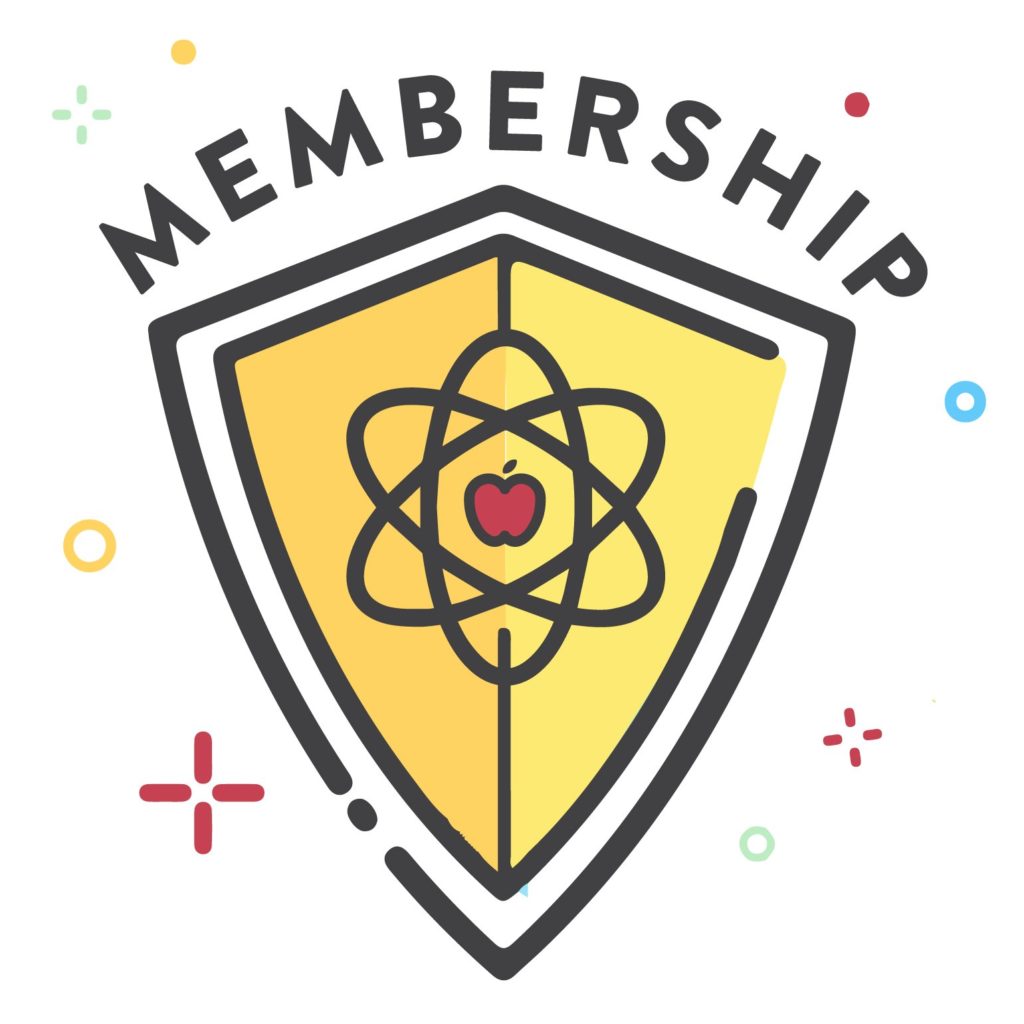On this week’s episode, Stacy and Sarah talk about the connection between sleep and stress. The hosts also break down a list of things you can do to reduce your stress levels, increasing your sleep quantity and quality.
If you enjoy the show, please review it on iTunes!
The Paleo View (TPV), Episode 397: Practical Tips for the Sleep Stress Cycle
Welcome back to the Paleo View, episode 397. (0:40)
Our world is changing so rapidly right now, and when Sarah switched direction on last week’s show, she thinks she missed updating the show notes in one spot and not the other.
There is lots going on in this world right now and Stacy and Sarah are on a mission to provide practical tips that are evergreen.
Right now with extra stress, it is likely that your sleep cycle is being impacted.
However, managing your sleep cycle is one of the most important things you can do for your health right now.
Sarah shared an update on how she is doing and what life is looking like right now.
Overall, Sarah is feeling a tremendous amount of gratitude.
Stacy shared her belly breathing practice and how she is using this calming practice.
This week Stacy’s family celebrated Finn’s birthday, and she shared her grateful mindset around this year’s unique celebration.
Save 70% Off the AIP Lecture Series!
Learn everything you need to know about the Autoimmune Protocol to regain your health!
I am loving this AIP course and all the information I am receiving. The amount of work you have put into this is amazing and greatly, GREATLY, appreciated. Thank you so much. Taking this course gives me the knowledge I need to understand why my body is doing what it is doing and reinforces my determination to continue along this dietary path to heal it. Invaluable!
Carmen Maier

Awareness of Body & Mind
Different types of meditations resonate with different people. (11:24)
Sarah loves a body scan meditation.
Meditation is not one size fits all; there are many different shades and colors of it.
A lot of people don’t realize how disrupted their sleep is until they find a way to fix it, and they realize how different they feel.
The trigger for Stacy is whether or not she feels her body sink into the bed when she lies down.
If she doesn’t feel that sink, she knows there is tension in her body and she is dealing with anxiety.
Next time you climb into bed, feel your muscles and notice how you feel physically.
This information will tell you how you are feeling emotionally.
When Stacy doesn’t feel that sinking feeling when she lies down, she does three things.
First, she takes melatonin.
If she has time she will take a magnesium bath.
Then she utilizes her breathing technique.
Listener’s Question
After the last covid-19 podcast episode, Amy submitted the following question (17:50):
Thank you, ladies, so much for your episodes on covid-19.
Both episodes (here and here) could not have come at a better time!
Your top immune-boosting tips are the two things I can’t seem to get a handle on, sleep and stress.
I am a busy mom of 2, a wife and an entrepreneur, even working from home my days are crazy.
By the time I get to bed, (no Sarah, I do not have an adult bedtime) I struggle to fall asleep due to my racing stress filled thoughts.
I find myself not only stressing about the things I did not get done and the following day’s to-do list but then I stress out about the lack of sleep I am getting, by laying awake stressing. HELP!
For us super busy women, like the both of you, where do we even start in the practical realistic implementation of improving our sleep and reducing stress?
What changes will make the most impact? Is there a road map for us to follow?
Thank you again for all that you both do.
The Link Between the Two
Before Stacy and Sarah jump in to answer the question, Stacy wants to first say – Amy, you are not alone.
From both Stacy’s perspective and what she is hearing from others on social media, a lot of people are feeling your frustrations.
Stacy also wants to plug Sarah’s e-book on sleep, which you can find here, complete with an in-depth roadmap.
We have to be very committed in terms of supporting sleep and stress management in order to have this dialed in.
As soon as life gets busy, this is the easiest thing to drop.
But the reason why it is so important to look at these lifestyle factors is that they are linked.
High-stress disrupts sleep.
It can delay your ability to actually fall asleep, and you aren’t able to get into a deep sleep.
In addition, it can also take the form where you wake up in the middle of the night and are unable to fall back asleep for hours.
Stress impacts sleep quality and quantity, and then not getting enough quality sleep is one of the biggest stress magnifiers.
So when you are not getting enough sleep, your physiological response to stress (in any form), will push your body to produce more stress hormones.
As much as these are two independently important lifestyle factors to dial in, it is really important to work on them together because they are so interconnected.
Habit Changes
While Stacy and Sarah present these suggestions, think about which of these options you can implement easiest and immediately.
Feel a win from them, and then focus on other things.
We are all super stressed right now, and we don’t need to add stress by worrying about what we are not doing.
Try to do the things that you can.
Sarah is going to divide these tips, and will first focus on the things that won’t interfere with your routine.
She will then shift to the things that require more energy but yield a bigger result.
The Easier Things – Adult Bed Time
Think of these tips as the low hanging fruit (28:11).
These are the things you can do today, without ordering anything or leaving the house.
The first area of focus, setting an adult bedtime.
This is about making sure you are in bed for 8-hours.
Going to bed at the same time every night is equally important.
This builds predictability for your body’s many systems that will help you fall asleep, stay asleep, and wake up feeling well-rested.
Step one is to solidify what time you will go to bed every night.
Once you have figured that piece out, then you can back up the bedtime to make sure you are getting enough sleep.
If we treat every day like a vacation then we lose routine.
Stacy shared the domino effect that happens when she lets her kids stay up late and how it impacts everything the next day.
It really does snowball quickly outside of your own personal sleep habits.
Sunlight Time
One of the things that is really challenging for us is getting sunlight exposure throughout the day, especially since we are spending much of our time inside right now. (34:22)
If you live in a neighborhood where you can go for a walk every day while still practicing social distancing, take advantage!
Make sure you are getting that bright sun exposure throughout the day to cement your circadian rhythms.
If you can’t, look into purchasing a light therapy box, which are incredibly affordable these days.
Look for one that is white light, with at least 10,000 luxe.
Spend 15 to 30 minutes with it, placing it a foot to two feet away from your face, but at an angle.
This is important for your body knowing what time it is.
Evenings should be dim, and this is where amber tint glasses can be useful.
Sleep in a pitch dark bedroom.
Refer back to this melatonin podcast episode for information on this supplement.
Now is a great time to address stress management and sleep, which are two areas that tend to unravel when life gets busy.
Sarah is working to take her anxiety and use that energy towards implementing something that she would otherwise let slide.
Stress Relief
Moving into the stress piece, there are a few really important things that we can do. (41:09).
Just taking breaks throughout the day to just empty our brains is extremely helpful.
Find three times during the day to close your eyes and take a few deep breaths.
Take that one-minute break, three times a day as a starting place.
If you have kids at home, use that one-minute break to go play with your kids or have a dance party.
Sarah feels a night and day difference between her stress levels when she takes breaks to be silly.
It is very hard for Sarah to pull herself away when she is feeling productive.
Stacy too feels like she is a workaholic, and her family plays games with Alexa to take a brain/screen break.
This also allows them to laugh and have fun together.
Stacy reminds listeners that this is an opportunity to reconnect with your family.
You may be feeling like there is a lot you have to do for your children.
However, you can use this time to teach your children and empower them to do things for themselves.
Things You Can Do Now
Here are some of the things that you can do that lead to that snowball effect of overall good longterm health changes. (48:00)
Stop eating two to four hours before bedtime.
Avoid caffeine and sweets (outside of fruit) in the afternoon.
Make sure you are not vitamin D insufficient.
Don’t guess – test.
Get time outside.
Make time for exercise.
Read a paper book before bed.
This is an easy way to reduce screen time.
Putting away screens an hour before bedtime is a great way to build in the downtime before bed.
Incorporate a mindfulness practice into your day.
Sarah’s family is using the app Headspace, and they practice for 10-minutes a day as a family.
Be present in what you are doing.
Separate your activities so that you can have work-life balance, and so that you can be present and find fulfillment in whatever it is you are doing.
Find ways to come together virtually. Maintaining your sense of community is vital right now, even while practicing physical distancing.
Spend time with a pet! Now is a great time to foster or adopt a pet if you are able to.
Take a screen detox.
Come up with a cycle for how to make screen time work for you, and when to turn it off, because that will make a difference in your time management for sure.
Closing Thoughts
Sarah hopes that this collection of tips gives some food for thought on how you can use this time at home to address things that are easy to fall off the to-do list.
Take the anxiety that is normal during this situation, and channel that into positive actions that are going to lend themselves to lifelong habits.
Sarah hopes this is a helpful episode.
Stacy feels helped!
She feels equipped with the tools to take action to be her best self.
Thank you, Amy, for the great question!
And thank you, listeners, for tuning in!
If you found this episode helpful, please leave a review and share it with others.
There is a lot of information out there right now, and it is important to both Stacy and Sarah to be a steady rock during this weird, changing time.
Thanks for listening, and we will be back again next week! (1:06:16)










